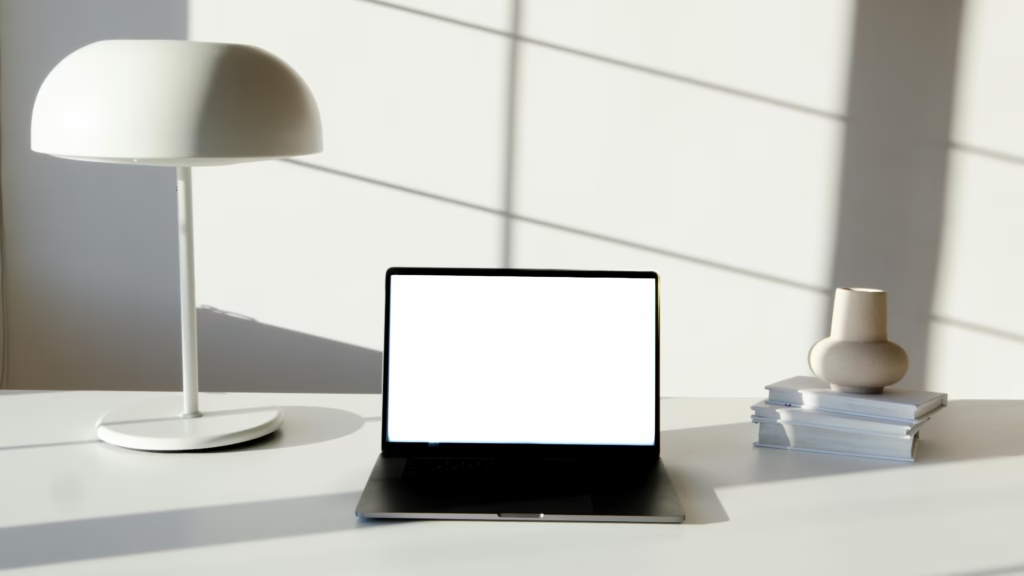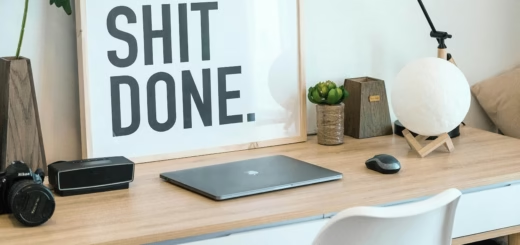Digital Minimalism: Reclaiming Your Focus

Digital Minimalism and The Attention Crisis We Can No Longer Ignore
In a world engineered to capture and monetize our attention, maintaining focus has become an increasingly rare and valuable skill. The average person now checks their smartphone 96 times per day according to recent research—approximately once every 10 minutes of waking life. This constant digital engagement comes with measurable costs. To complicate matters further, the advent of AI and the utility it provides has created an environment where digital gadgets have become essential tools for work and indispensable sources of knowledge. Yet this technological abundance raises an important question: How do we harness these powerful tools and yet maintain digital minimalism in life?
Neuroscience research from Stanford University has demonstrated that heavy digital media users show significant differences in prefrontal cortex development—the brain region responsible for focus, planning, and impulse control. Meanwhile, a landmark study published in Nature found that even the mere presence of a smartphone reduces cognitive capacity by creating a “brain drain” effect.
These findings paint a sobering picture: our relationship with digital technology isn’t just changing our habits—it’s changing our cognitive abilities and neural architecture.
Enter digital minimalism—a philosophy pioneered by computer scientist and author Cal Newport that goes beyond surface-level digital detoxes to address the foundational role of technology in our lives. Unlike reactive approaches to digital overwhelm (like occasional screen time limits or notification muting), digital minimalism offers a comprehensive framework for reclaiming your attention and rebuilding your relationship with technology from the ground up while maintaining optimal levels of productivity.
This guide explores the science behind digital minimalism and provides actionable strategies for implementing this powerful approach in an increasingly connected world.
What Is Digital Minimalism? Beyond Simple “Digital Detox”
Digital minimalism is best defined as a philosophy that helps you question what digital communication tools (and behaviors surrounding these tools) add the most value to your life. It is about applying a minimalist mindset to our digital lives.
As Cal Newport explains in his book “Digital Minimalism: Choosing a Focused Life in a Noisy World,” true digital minimalists are “selective about the technologies they use, rather than unselectively adopting each new technology that seems valuable.” I have been deeply influence by Cal Newport’s philosophy and have included many of his tips in my upcoming book called the Saptarishi. His approach towards digital minimalism transcends typical advice about digital wellbeing in several key ways:
Digital Minimalism vs. Traditional Digital Wellness Approaches
| Digital Minimalism | Conventional Digital Wellness |
|---|---|
| Proactive philosophy built on intentional values | Reactive response to perceived digital problems |
| Focuses on maximizing high-value activities | Focuses on minimizing low-value distractions |
| Questions the premise of each technology | Accepts technologies but tries to use them better |
| Built on principles that create sustainable change | Built on tactics that require ongoing willpower |
| Emphasizes selective adoption of technologies | Emphasizes moderation of existing technologies |
The Three Principles of Digital Minimalism
According to Newport’s research, effective digital minimalism rests on three core principles:
Digital excess is costly: Digital tools fragment our attention and introduce new sources of stress and obligation—costs often invisible until removed. Select only the tech that supports and adds value to your core values and goals.
Optimization is important: It’s not enough to decide which technologies to use; we must decide how to use them to maximize their benefits and minimize their harms. Use the selected tech to maximise value and at the same time minimise distractions.
Intentionality is satisfying: Making deliberate technology choices aligns with our deeply held values and creates a sense of autonomy that passive consumption cannot match. Use the tech with a strong sense of purpose.
The approach has gained significant scientific backing. A 2022 study in the Journal of Experimental Psychology found that participants who implemented digital minimalism principles showed a 28% reduction in perceived stress and a 23% improvement in sustained attention compared to control groups using conventional screen time management approaches.
The Digital Declutter: Your 40-Day Reset Protocol
The foundation of digital minimalism is the “digital declutter”—a 30-day period where you step away from optional technologies to reset your digital life. This isn’t meant as a permanent change but as a reset that creates space to reevaluate your relationship with technology.
Phase 1: Preparation (Days 1-3)
Step 1: Define “Optional” Technologies
Make a comprehensive list of digital technologies in your life, categorizing each as:
- Essential: Required for basic responsibilities (may include specific work tools, certain communication channels)
- Optional: Everything else (typically including social media, news sites, streaming entertainment, games)
Step 2: Define Core Activities
Identify 2-3 high-value leisure activities you’ll pursue during your declutter. Research in positive psychology shows that having predetermined meaningful alternatives dramatically increases success rates for digital reduction efforts.
Examples of high-value alternatives include:
- Physical activities (hiking, running, dancing)
- Creative pursuits (writing, painting, music)
- Skill development (language learning, cooking)
- Social connection (in-person conversations, community events)
- Contemplative practices (meditation, journaling)
Step 3: Establish Operating Procedures
For each essential technology, define concrete rules for:
- When you’ll use it (specific times/contexts)
- How you’ll use it (specific purposes/boundaries)
- Where you’ll use it (specific locations)
Document these rules in writing to serve as your digital operating manual during the declutter period.
Phase 2: The Digital Declutter (Days 4-33)
For 30 days, remove all optional technologies from your life while following your predefined operating procedures for essential technologies. This means:
- Uninstall apps from your devices (don’t just hide them)
- Log out of services on all devices
- Inform your social circle about your declutter (with alternative contact methods)
- Enable auto-responders on messaging platforms
- Create environmental barriers (like storing devices in drawers or using blocking software)
During this period, dedicate time to your predefined high-value activities and note observations about changes in your attention, mood, and productivity.
Phase 3: Reintroduction (Days 34-40)
The final week involves selective reintroduction of optional technologies. For each technology you’re considering reintroducing, ask:
- Does this technology directly support something I deeply value? (If not, leave it out)
- Is this the best way to support this value? (If not, find a better tool)
- How specifically will I use this technology to maximize its value and minimize its harms? (Define concrete operating procedures)
This intentional reintroduction process typically results in returning less than 50% of optional technologies to your life according to Newport’s research.
Beyond the Declutter: Building a Sustainable Digital Minimalist Lifestyle
The declutter is just the beginning. Creating a sustainable digitally minimalist lifestyle requires ongoing practices and environmental design. Here are evidence-based strategies for maintaining digital minimalism for the long term:
1. Implement Attention Management Systems
Unlike time management, attention management focuses on controlling where your focus goes. Research from Microsoft’s Human Factors Lab suggests these practices significantly improve focus:
- Schedule dedicated deep work blocks of 90-120 minutes with all notifications disabled
- Practice “mono-tasking” by using one device for one purpose at a time
- Create attention transitions between activities (5-minute buffer periods)
- Implement a “full-attention filter” for information consumption—if it’s not worth your full attention, it’s not worth consuming
2. Design Your Digital Environment
Your technology environment dramatically influences your behavior. Based on behavioral design research, consider these environmental modifications:
- Create device-free zones in your home (especially bedrooms and dining areas)
- Establish tech-free time blocks in your daily schedule
- Use a physical alarm clock instead of your phone
- Disable all non-essential notifications on all devices
- Employ friction-increasing tools like:
3. Adopt High-Quality Leisure Practices
One reason digital distractions are so compelling is that they fill small time gaps with low-effort stimulation. Combat this by developing what Newport calls “high-quality leisure”—activities that provide more satisfaction than digital alternatives.
Research in leisure studies has found the most fulfilling leisure activities typically involve:
- Active engagement rather than passive consumption
- Skill development that provides growth opportunities
- Social connection with others sharing the activity
- Physical movement that engages the body
- Creation rather than consumption
Examples include:
- Learning musical instruments
- Participating in sports or fitness communities
- Engaging in maker activities (woodworking, crafting)
- Contributing to volunteer organizations
- Joining book clubs or discussion groups
4. Practice Digital Minimalism at Work
Professional demands can make digital minimalism particularly challenging in work contexts. Research on workplace productivity suggests these strategies for maintaining focus in professional settings:
- Batch communications into 2-3 designated time blocks daily
- Set explicit response time expectations (e.g., “I check email at 10 AM and 3 PM on weekdays”)
- Use communication escalation policies (e.g., “For urgent matters, call instead of emailing”)
- Implement meeting minimalism by declining low-value meetings or suggesting asynchronous alternatives
- Create technology-free thinking time for strategic work and problem-solving
- Document your boundaries in a public personal operating manual shared with colleagues
5. Develop a Digital Nutrition Framework
Just as we’ve developed frameworks for evaluating food based on nutritional quality rather than taste alone, digital minimalists develop frameworks for evaluating information based on its cognitive value.
Based on research in information science, consider categorizing digital content as:
- Nutritious: Deep, thoughtful content that develops understanding (academic journals, books, in-depth analysis)
- Empty Calories: Content that feels satisfying but provides little value (viral stories, most social media feeds)
- Toxic: Content that actively harms wellbeing (outrage-driven news, social comparison content)
Create a “digital diet” that maximizes nutritious content while minimizing empty calories and eliminating toxic content.
Overcoming Common Digital Minimalism Challenges
Challenge 1: Professional Expectations
Problem: Work cultures that expect constant connectivity and immediate responses
Solution: Set and communicate clear boundaries while demonstrating high value during focused work periods. Research from Harvard Business School found that the most productive employees are often those who protect their focused time while being strategically available.
Challenge 2: Social FOMO (Fear of Missing Out)
Problem: Concern about missing social connections or events
Solution: Implement alternative connection strategies like scheduled check-ins, focused social media time, or designated group communication channels. Research shows that deeper, focused social interactions contribute more to wellbeing than frequent shallow digital interactions.
Challenge 3: Digital Entertainment Dependence
Problem: Reliance on streaming services and digital entertainment for relaxation
Solution: Gradually replace passive consumption with active leisure alternatives while maintaining curated, intentional entertainment time. Studies on leisure satisfaction consistently find that active leisure produces greater long-term satisfaction than passive consumption.
Challenge 4: Backsliding Into Old Habits
Problem: Gradually reverting to pre-minimalism digital behaviors
Solution: Implement regular “digital resets” (mini-declutters) on a quarterly basis and use habit tracking to maintain awareness. Research on habit formation suggests that periodic reinforcement significantly increases long-term behavior maintenance.
Digital Minimalism for Families and Teams
Creating a Family Digital Philosophy
Digital minimalism can be particularly powerful when implemented at the family level. Consider these research-backed family approaches:
- Develop a family media plan using the American Academy of Pediatrics template
- Create tech-free zones and times that apply to all family members (including parents)
- Implement “tech Sabbaths” (24-hour periods without optional technology) on a weekly basis
- Model healthy technology behaviors as parents and caregivers
- Focus on replacement activities rather than just restrictions
Implementing Team Digital Minimalism
For managers and team leaders, fostering digital minimalism can dramatically improve team performance:
- Create communication protocols that respect focus time
- Normalize asynchronous communication for non-urgent matters
- Implement meeting minimalism (fewer, shorter, more focused meetings)
- Develop team agreements around response time expectations
- Recognize and reward deep work rather than just responsiveness
The Neuroscience of Digital Minimalism: Why It Works
The effectiveness of digital minimalism is supported by emerging neuroscience research. Key findings include:
Attention Restoration Theory: Research from the University of Michigan demonstrates that natural environments and technology breaks allow depleted attention resources to replenish.
Default Mode Network Activation: Neuroimaging studies show that periods without digital stimulation activate the brain’s default mode network, critical for creativity, self-reflection, and problem-solving.
Neuroplasticity Effects: Research from University College London shows that sustained attention practices physically reshape neural pathways, strengthening focus over time.
Dopamine Regulation: Studies on technology use demonstrate that taking breaks from highly stimulating digital environments helps reset dopamine sensitivity, improving concentration and satisfaction.
Conclusion: Digital Minimalism as a Competitive Advantage
As our world becomes increasingly dominated by digital distractions, the ability to maintain focused attention emerges as a rare and valuable skill. Digital minimalism offers more than just personal wellbeing benefits—it provides a significant competitive advantage in both professional and personal domains.
The digital minimalists who can sustain deep focus, maintain intentional technology relationships, and protect their cognitive resources will increasingly stand out in a world of fragmented attention. As Cal Newport observes, “In a world where most people are increasingly distracted, depth becomes increasingly rare and therefore increasingly valuable.”
By implementing the strategies outlined in this guide, you can join the growing movement of digital minimalists who are reclaiming their attention and, by extension, their ability to live according to their deepest values.
Your Next Steps
- Schedule your 30-day digital declutter, ideally beginning next weekend
- Identify your 2-3 high-value leisure activities to pursue during the declutter
- Download our Digital Minimalism Workbook [link] for step-by-step guidance
- Join our upcoming Digital Minimalism Challenge [link] for community support
Have you experimented with digital minimalism or other approaches to reducing digital distraction? What worked best for you? Share your experience in the comments below!
Related Articles:
- The Ultimate Guide to Work-Life Balance: Tips That Actually Work in 2025
- Morning Routines of Highly Successful People: Start Today
- 5 Productivity Systems That Actually Create More Free Time
- How to Conduct a Personal Time Audit That Reveals Hidden Opportunities
- Deep Work vs. Shallow Work: Maximizing Your Cognitive Output



